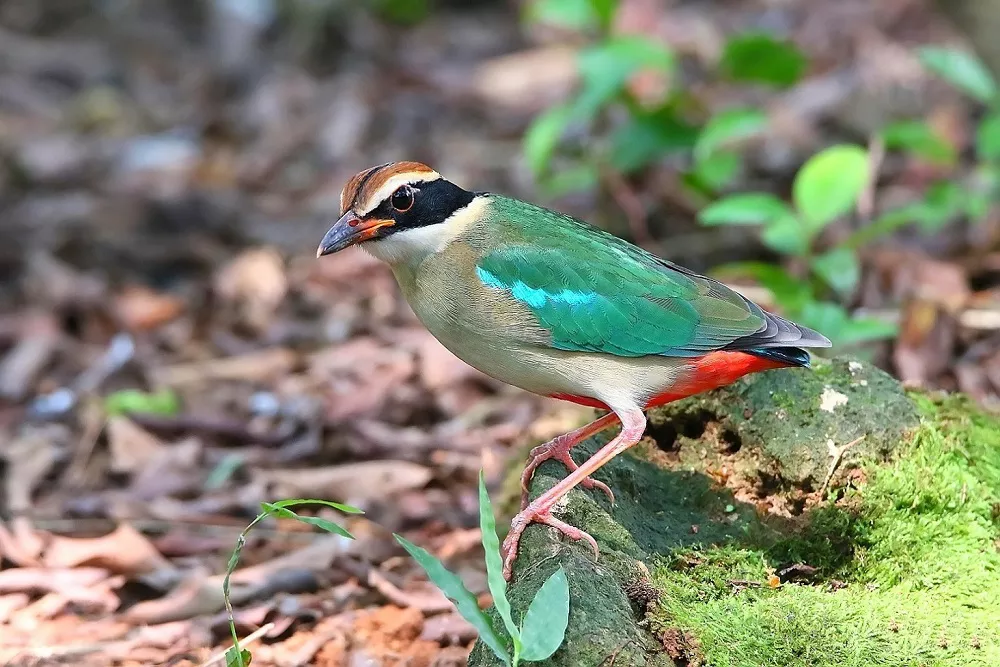The Fairy Pitta (Pitta nympha) is a small, brightly-colored bird that is native to the forests of East and Southeast Asia. These birds are known for their striking plumage, with males displaying bright blue and green feathers on their backs, and females sporting a more subdued olive-green coloration. While their appearance is certainly impressive, it is also important to understand what Fairy Pittas eat, as their diet plays a crucial role in their survival and overall health.
Fairy Pittas are insectivores, which means that they primarily feed on insects and other small invertebrates. They are known to consume a wide variety of prey, including grasshoppers, crickets, ants, termites, beetles, caterpillars, and spiders. They are also known to feed on small reptiles, such as lizards and geckos, as well as amphibians like frogs and toads.
One of the most interesting aspects of Fairy Pitta feeding behavior is their use of “trap-lining” to locate food sources. Trap-lining is a foraging strategy where a bird visits a series of pre-determined locations in order to find food. Fairy Pittas are known to establish traplines in their territories, visiting the same locations each day in order to maximize their chances of finding prey. They are able to remember the locations of food sources for weeks or even months, allowing them to effectively exploit available resources.
Fairy Pittas also have a unique feeding method where they use their wings to create a “tent” of leaves or branches over their prey. This is thought to help them better see and capture their prey, as well as protect it from other predators. They may also use their wings to fan away debris or leaves in order to expose their prey.
While Fairy Pittas primarily forage on the ground, they are also known to catch insects and other prey while in flight. They are skilled aerial hunters, capable of snatching insects out of the air with their beaks.
Fairy Pittas are migratory birds, and their diet may vary depending on the season and location. During the breeding season, they are found in East Asia, including Japan, China. In the winter months, they migrate to Southeast Asia, including Thailand, Vietnam, and Indonesia. The availability of insects may vary in these different regions, and Fairy Pittas may adjust their diet accordingly.
Fairy Pittas are also known to have a strong preference for specific types of prey. For example, they have been observed selectively hunting for ants with large abdomens, which are high in fat and provide a rich source of energy. This preference for specific prey types may be influenced by factors such as the nutritional content of the prey or the availability of food sources in a particular habitat.
Nestling Diet: A High-Protein Regimen
When it comes to raising its young, the Fairy Pitta’s diet takes a turn to cater primarily to the nestlings’ dietary needs. During this crucial phase, the parent birds forage extensively for soft-bodied insects, rich in protein, essential for the rapid growth and development of their offspring. This dietary strategy showcases the bird’s remarkable parental instincts, ensuring the next generation’s vitality and survival.
In conclusion, Fairy Pittas are insectivorous birds that feed on a wide variety of prey, including insects, spiders, small reptiles, and amphibians. They are skilled hunters and use a range of foraging strategies, including trap-lining and creating “tents” over their prey. Their feeding behavior is influenced by factors such as prey availability and nutritional content, and plays a crucial role in their survival and reproductive success.


 Facebook
Facebook  Instagram
Instagram  Youtube
Youtube 